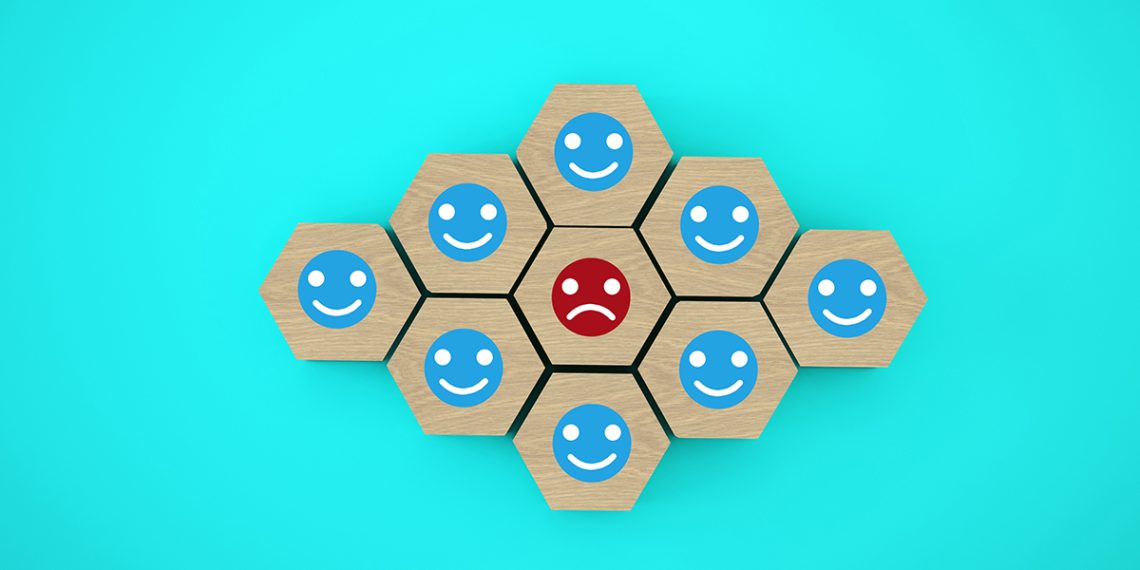Your customers matter.
Most successful businesses know that providing a top-quality customer experience is key to generating revenue. This is because so much depends on customer loyalty, often the endpoint in a customer’s journey.
But what if your average customer journey doesn’t reach maturity? You risk losing a major percentage of your revenue.
This is why learning about customer experience maturity models and how to make the most of them is essential.
In this post, we will take a look at the various stages, advantages, and ways to use customer experience maturity models.
Ready to cut to the chase and dive straight into the content?
Collect feedback with JustFeedback
JustFeedback helps your business increase profits and reduce risk by improving your customer experience
What is customer experience maturity?
A customer’s viewpoint and voice will impact your business decisions. With a customer experience maturity model, you can figure out the degree of such an impact.
It consists of a tiered framework that makes it easy for businesses to assess the depth of an existing customer journey.
Additionally, it allows you to measure the cross-functional aspect of a customer journey.
If you are new to understanding customer experience maturity models, it’s recommended that you keep things simple and know that the entire tool can be categorized into three main elements —
- Start out with the key metrics.
- Collect customer feedback and make progress toward improving CX.
- Manage priorities, expand your operation, and scale.
What are the stages of the customer experience maturity model?
There are multiple stages involved when companies build tiered CX maturity models. Let’s take a deeper delve into a complete list of the stages in any CX maturity model —
1. Static experience
If you’ve just started designing a CX strategy, you are likely to be delivering an initial stage of CX maturity. This means that you’re dealing with a minimum design, i.e., a completely static experience.
Most businesses offering a static experience usually depend on an in-house data source. This could be a contact list or CRM, for example.
As with emails, you can use messages via a single channel. Static experience can work without having to segment the list.
2. Automation in customer experience management
When you’re familiar with the first stage, you can start to introduce automation to further the CX maturity. To do this, you’ll make use of one-to-one data points.
Stage two involves basic data segmentation tasks. You can use existing data sources or add further elements to refine the segmentation and improve targeting.
At this point, you should ensure that all channels remain separate. You won’t be using any personalization at this stage.
3. Personalization
During stage three of the CX maturity model, you’ll focus entirely on personalizing the channels.
If you want to connect and engage with a higher number of your customers, personalization has to be a priority.
To start out, you’ll need to personalize your current campaigns. You can focus on one or two channels, figure out the results, and then duplicate this on all other channels and segments.
4. Advanced omnichannel
The fourth stage of the CX maturity model focuses on capitalizing on one-to-many roll-ups.
You can target web, mobile, email, and in-store channels, making the most of your customer data platform to perform dynamic segmentation.
The idea here is to obtain a 360° view of the customer and measure the impact of segmentation on touchpoints within a typical customer journey.
5. Data-driven omnichannel
Lastly, your aim will be to achieve an omnichannel CX strategy that is essentially data-driven. You may need the help of technology (e.g., machine learning) in order to do this.
This is because you’ll be sourcing data from numerous sources and it’s no easy task to derive data-driven customer insights and predictions without the right technology.
With the appropriate tools, you can perform dynamic segmentation whilst making the most of the set KPIs.
How to use customer experience maturity models?
As mentioned above, you’ll need to understand the areas you could be improving if you want to build a better customer experience maturity model. Here are five areas of action to focus on if you’re looking for immediate effect —
1. Data
All crucial data has to be available to you before making any decisions. It’s imperative to focus on what your customers want.
You could guess, rely on intuition, or execute anecdotal information to make these decisions, right? But you’re only going to get so far.
Focusing on reliable data sources such as websites, social media, emails, chatbots etc., can boost the performance of your customer experience management team.
2. Design
The next step is to design the customer experience. For this, you need to have a clear picture of your customers’ preferences.
Prepare a document detailing exceptional customer experiences that have made or could make a huge impact.
Doing this will help eliminate inconsistencies and allow you to develop linear customer journeys that encompass all touchpoints. Note that you might need to build a team that can manage your CX program from A to Z.
3. Delivery
Once you’ve mapped the customer experience maturity model, you’ll have to get ready to implement it.
In order to successfully deliver the CX program, it’s essential to provide all team members and employees with appropriate training.
This is even more important if you’ve created a brand-new customer experience maturity model.
4. Measurement
Customer experience maturity assessment, measurement, and benchmarking are key to building a successful CX strategy through your customer experience maturity model.
To do this, you should make the most of any collected data and develop a baseline for the customer experience program.
As you benchmark your customer service metrics, you’ll have enough data (CSAT) to measure the impact of your CX strategy in terms of both customer satisfaction and loyalty.
5. Culture
But relying on benchmarking alone won’t cut it.
To reach the final stage of any customer experience program, you’ll have to put in some extra effort to make the CX program a cornerstone of your culture.
Every single employee should have a customer-centric mindset. Every last element of their performance should be aligned with customer experience.
In other words, a customer-centric organization should aim to foster a culture with a shared vision and core values.
The value of the customer experience maturity model
Now that you have a deeper understanding of customer experience maturity models, let’s discuss how they can benefit your organization. What can a customer experience maturity model help you to do?
Let’s take a look at some examples —
1. Identify the starting point
You need a customer experience maturity model to have a clearer understanding of how your existing CX strategy performs.
The CX maturity model will provide benchmarks you can use to evaluate whether or not your company aligns with industry standards and best practices.
2. Reveal gaps and opportunities
If you’re planning to develop a customer experience strategy that will serve your company for years to come, you’ll be able to count on your CX maturity model to help you achieve this.
It will help highlight both gaps and opportunities in the CX strategies of an organization.
3. Generate a blueprint
Do you want your organization’s customer experience to improve? Are you hoping that customer satisfaction ratings increase?
This can only happen if you work toward building a CX strategy blueprint. And the CX maturity model can provide this, generating a roadmap for growth.
4. Track and monitor progress
Once you have a CX maturity model in place, you can develop improved tracking settings for all customer touchpoints. This makes it easier to measure the impact of your efforts in terms of CX improvement.
In other words, ensure that your CX maturity model provides a ROI for your CX initiatives.
5. Boost customer experience
Your goal in striving toward building and improving CX maturity models is straightforward: you want to boost customer experience, don’t you?
If you and your teams are aligned when it comes to developing a CX maturity model, you’re giving a clear message that you want to exceed customer expectations and increase loyalty.
6. Provide a competitive advantage
In today’s market, customer experience serves as a significant differentiator.
If you don’t work toward leveraging your CX maturity model, your competitors could gain the upper hand. You need to go ahead and build a CX maturity model if you’re looking to meet changing customer expectations and boost loyalty.
7. Improve customer retention
The cost of customer retention is significantly lower than the cost of customer acquisition. As you work your way through the stages of customer experience maturity, you’ll find it easier to satisfy customers and strengthen customer retention rates.
In time you’ll lower customer churn and drive up customer lifetime value.
8. Make it easier to adapt
The market is in a constant state of flux. Brands that prepare for changes often come out on top. With the CX maturity model, you’ll find yourself always prepared to deal with any disruptions and meet the challenges of changing market dynamics.
9. Reduce costs and boost revenue
Customer experience maturity models are known to help lower costs. A more effective CX maturity model can reduce the number of customer support inquiries. A reduction in the number of complaints also leads to enhanced efficiency and increased revenue.
Final thoughts
So, there you have it. In this post, we’ve shared everything your organization needs to know about developing customer experience maturity models.
However, you should understand that creating a CX maturity model isn’t a one-time deal.
Building your CX maturity model is an ongoing process that will ultimately lead to greater business success. As customer behavior changes, your CX maturity model will guide you in making better business decisions.
Remember that developing a customer experience maturity model might take some time. However, there are some cutting-edge tools and solutions out there to get the job done more efficiently. We highly recommend using them!
Did you find this post helpful? Watch this space for more informative content to come!



